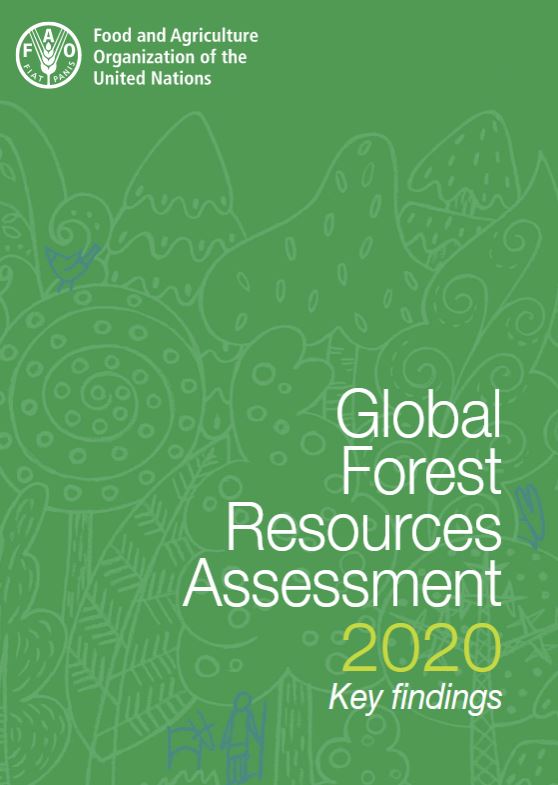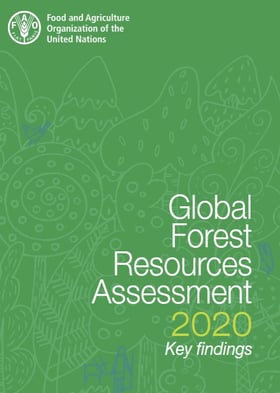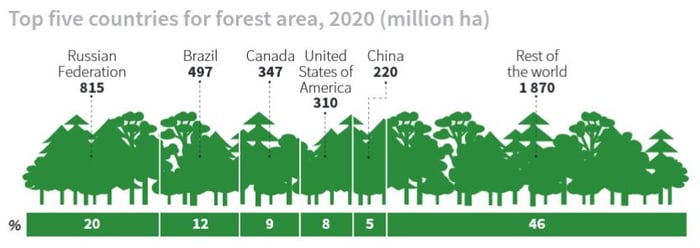2 min read
FAO Publishes Key Findings of Global Forest Resources Assessments 2020
John Greene
:
May 19, 2020

The Food & Agriculture Organization of the United Nations (FAO) recently released the key findings to its Global Forest Resources Assessments (FRA) for 2020, which is a comprehensive report produced every five years that provides a consistent overview of the world's forests and how they are changing. The full report will be published later this year.
New for this iteration of the publication is an additional interactive resource called "A Fresh Perspective: Global Forest Resources Assessment 2020," which allows users to visualize the data at their own pace.
FAO has been monitoring the world's forests at five- to ten-year intervals since 1946. The latest assessment examines the status of (and trends in) more than 60 forest-related variables in 236 countries and territories from the study period 1990–2020. FRA 2020 data were collected using commonly-agreed terms and definitions through a transparent, traceable reporting process and a well-established network of officially nominated national correspondents that covers 187 countries and territories. More than 700 people were directly involved in the process.
The world has lost 178 million hectares (ha) (440 million acres) of forest since 1990, which is an area about the size of Libya. The rate of net forest loss decreased substantially over the period 1990–2020, however, due to a reduction in deforestation in some countries, plus increases in forest area in others through afforestation and the natural expansion of forests.
In the most recent five-year period (2015–2020), the annual rate of deforestation was estimated at 10 million ha (25 million acres), which is down from 12 million ha (30 million acres) in 2010–2015.
Key Findings in 2020
- Forests cover nearly one-third of the land globally. The world has a total forest area of 4.06 billion ha (9.9 billion acres), which is 31 percent of the total land area. This area is equivalent to 0.52 ha (1.3 acres) per person – although forests are not distributed equally among the world’s peoples or geographically. More than half (54 percent) of the world’s forests is in five countries: the Russian Federation, Brazil, Canada, the United States and China.
 Source: Global Forest Resources Assessment 2020 Key findings
Source: Global Forest Resources Assessment 2020 Key findings
- More than 90 percent of the world’s forests have regenerated naturally. Ninety-three percent (3.75 billion ha) of the forest area worldwide is composed of naturally regenerating forests. The area of naturally regenerating forests has decreased since 1990 (at a declining rate of loss), but the area of planted forests has increased by 123 million ha (304 million acres).
- Plantations account for about 3 percent of the world’s forests. Plantation forests cover about 131 million ha (324 million acres), which is 3 percent of the global forest area and 45 percent of the total area of planted forests.
- About 30 percent of all forests is used primarily for production. Globally, about 1.15 billion ha (2.84 billion acres) of forest is managed primarily for the production of wood and non-wood forest products. In addition, 749 million ha (1.85 billion acres) is designated for multiple use, which often includes production.
- Total forest carbon stock is decreasing. The total carbon stock in forests decreased from 668 gigatons in 1990 to 662 gigatons in 2020; carbon density increased slightly over the same period, from 159 tons to 163 tons per ha.
- The world’s forests are mostly publicly owned, but the share of privately owned forests has increased since 1990. Seventy-three percent of the world’s forests is under public ownership, 22 percent is privately owned, and the ownership of the remainder is categorized as either “unknown” or “other.”
- More than 2 billion ha of forest has management plans. The area of global forest under management plans is increasing in all regions – globally, it has increased by 233 million ha (576 million acres) since 2000, reaching 2.05 billion ha (5 billion acres) in 2020.





